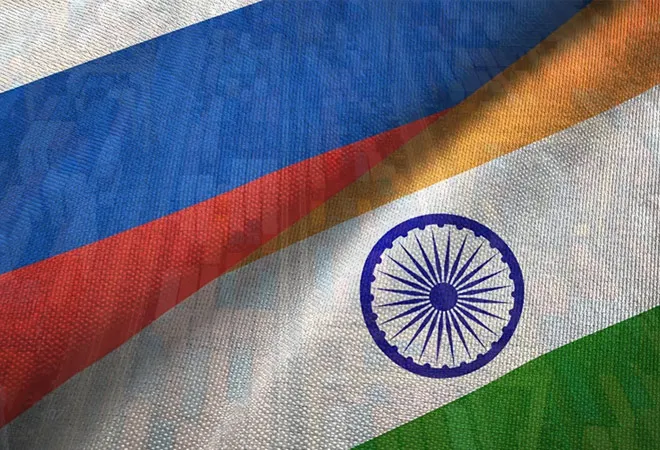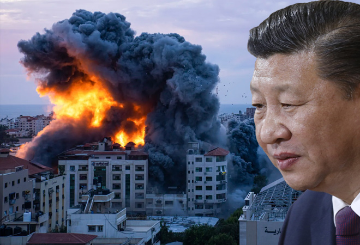
Introduction
India’s oil imports from Russia have gone up from 0.2 percent of total crude imports to 10 percent since April 2022, with
imports rising from 25,000 barrels a day at the beginning of 2022 to 600,000 barrels a day in May–June. The imports rose as Moscow offered crude at discounted rates, seeking to shift its customer base after European companies shunned Russian crude in opposition to its invasion of Ukraine.
However, as sanctions have cut off major Russian banks from SWIFT, the rising imports raised the question of payments to Russia, that were earlier made in dollars.
Precedents
Even though historically Russia and India had a successful experience with trade schemes in national currencies, today’s realities are quite different. Globalisation means that both countries are integrated into the global economy. However, since 2014, Moscow has been searching for ways to de-dollarise its economy and foreign trade. At first, these attempts appeared to be futile as both Russian companies and their foreign partners were not willing to shift away from a more predictable US dollar.
Only Belarus and Kazakhstan, which are Eurasian Economic Union members and Russia’s closest neighbours, conducted more transactions in rubles than India.
However, the adoption of (Countering America’s Adversaries Through Sanctions Act) CAATSA legislation in 2017, effectively barring any ‘significant transactions’ with Russian defence entities, and the US withdrawal from JCPOA in 2018which implied a ban on imports of Iranian oilsubstantially triggered the efforts by different actors to create alternatives to US dollar transactions. In India’s case, for instance, the threat of secondary sanctions under CAATSA forced a significant increase in the Russian ruble utilisation in recent years. Before 2019, more than half of Indian transfers for Russian goods and services were made in US dollars, however, after the beginning of payments for the S-400 contract, ruble inflows have considerably surpassed the dollar’s share.
In 2021, 53.4 percent of all payments from India to Russia were made in rubles while 38.3 percent were in dollars. India emerged as a leading foreign country to switch to the Russian currency. Only Belarus and Kazakhstan, which are Eurasian Economic Union members and Russia’s closest neighbours, conducted more transactions in rubles than India. Other BRICS partners have been more reluctant to utilise the Russian currency. Even China was largely making payments in dollars (36 percent) and euros (48 percent).
From the Russian side, the only ‘alternative’ currency that stood out in outgoing transactions was the yuan, whose share by the end of 2021 had risen to almost a third of all Russia’s payments to China. In contrast, 70 percent of Russian payments to India were done in dollars.
As is clear from the statistics, before the war in Ukraine, the dollar, euro, and other currencies still constituted a significant part of Russia’s trade with foreign partners while words about de-dollarisation were louder than actions. However, due to sanctions imposed by the West, Japan, South Korea, and Singapore, and having its leading banks excluded from SWIFT, the creation of alternate settlements for foreign trade has become a matter of survival for the Russian economy.
The new solution
India, looking for a way to settle payments and after much speculation about the revival of the Soviet-era rupee-ruble arrangement, announced the international trade settlement in Indian Rupees (INR) on 11 July, which would allow invoicing, payment, and settlement of exports/imports in rupees. In the case of Russia, this will allow for imports to be paid in rupees instead of dollars—which is the usual currency for bilateral trade between the two countries. To process payments, authorised banks in India will be allowed to open rupee Vostro accounts on behalf of a foreign bank from a partner trading country. Indian importers will
pay in rupees in these accounts, which, in turn, will be used to pay Indian exporters. The need for such a mechanism became clearer as reports emerged of Indian firms using dirhams and
yuan to settle payments with Russia.
To process payments, authorised banks in India will be allowed to open rupee Vostro accounts on behalf of a foreign bank from a partner trading country.
While the announcement does not mention Russia specifically, experts believe that at this point the sanctioned countries like Russia and Iran would be most interested in settling trade in Indian rupee. Other exporting countries, which are not under any sanctions, are likely to
prefer receiving payments in fully convertible currencies like dollars/euros/yen to help them pay for their imports in the international market. This has already been seen in the case of the
yuan, which despite increasing its share, still accounts for only 3.2 percent of global payments, with the dollar and euro still dominating the market.
Determining the exchange rate
For rupee settlement, India and Russia still need to decide the exchange rate. The RBI circular said that this shall be market determined but the parties have not announced a decision as yet. Both the currencies are under stress at the moment with the Indian rupee witnessing a sharp depreciation—at one point touching the rate of 80 to a dollar in July. On the other hand, despite its strong performance, the ruble’s true exchange rate cannot be determined as it is not being traded, and is under strict
capital controls. This makes determining a market exchange rate especially difficult between the two currencies, with differences already cropping up, leading to anintervention from the central banks.
The settlements in national currencies are also traditionally tricky due to the issue of trade
deficits, leaving one partner with an excess amount of currency of the other, which accounts for their rarity in international trade. As India imports much more from Russia than it exports, this would lead to a rupee balance accumulating for Russia in the Vostro account, leading to the question of where it
spends the remaining INR after paying for the exports. In
2021-22, India’s exports to Russia stood at US$3.25 billion while imports were at US$9.87 billion, leading to a deficit of US$6.62 billion.
A rise in exports would help in dealing with the deficit and reduce any potential excess rupee balance with Russia, but the actual gains can be assessed only after Indian businesses significantly increase their exports to the country.
RBI has suggested that this be addressed through payments for projects and investments as well as government securities. It remains to be seen how interested Russia would be in such a proposition. Another
proposal has called for the investment of rupees in joint ventures in defence that India and Russia have established. Indian trade organisations have also remarked on the opportunities for businesses being created due to the exit of western companies, especially in
sectors like pharma, agriculture, food products, consumer goods, electronics etc. A rise in exports would help in dealing with the deficit and reduce any potential excess rupee balance with Russia, but the actual gains can be assessed only after Indian businesses significantly increase their exports to the country.
Needless to say, the Indian government and central bank remain
sensitive to sanctions imposed by western countries and would be loath to fall foul of them. Further, it would remain wary of the potential threat of secondary sanctions. There will be a need to identify which Indian
banks will be able to set up Vostro accounts, where bigger players might want to avoid sanction risks associated with their international operations. The sanctions on numerous Russian banks would also necessitate a careful choice in that regard.
What’s next?
Both Russia and India are determined to find solutions to work around sanctions. However, some pertinent questions about the effectiveness and sustainability of the newly established mechanism remain. Other issues would be centred around the real value of the Russian rouble and ideas like whether there was a place for yuan for trade settlement between Indian and Russian entities.
The Russian side is likely to find the settlement system more appealing if the trade deficit could be lowered through an increase in Indian exports amidst the exit of Western firms.
The new arrangement in rupees, if adopted, could potentially shield bilateral trade from the restrictions imposed against Russian companies. It is less likely to bring about any considerable increase in turnover beyond energy and raw material imports. Apart from the multiplier effect of sanctions on the Russian economy, bilateral trade still suffers from unresolved structural issues that have hobbled economic ties in the 21st century. These include connectivity, tariff and non-tariff barriers, lack of business interest and excessive regulations in the markets of both countries. Until these issues are resolved, the trade will continue to suffer from imbalances, which can complicate the incorporation of the new mechanism.
These need to be addressed especially if the new mechanism is to be seen as more than a short-term solution. The Russian side is likely to find the settlement system more appealing if the trade deficit could be lowered through an increase in Indian exports amidst the exit of Western firms. Indian private businesses, which already have a limited presence in Russia, will be reluctant to enter a market under strict western sanctions unless the terms are attractive. Having been cut off from the West, Russia now has an incentive to focus on developing partnerships with Indian companies, which are regarded as a source of investment. The long overdue INSTC is being operationalised while new avenues and sectors to enter the Indian market are being explored.
The uncertainties regarding the future trajectory of sanctions against Russia, including the threat of secondary sanctions, continue to cast a shadow on bilateral engagements in the long term. The settlement system is yet to elicit a response from Russia, which would indicate how the idea has been received and whether it is viable in the long run. Indeed, the proposed mechanism may not be a panacea, but just a temporary lifeline to ensure that the trade of critical goods is sustainable.
The views expressed above belong to the author(s). ORF research and analyses now available on Telegram! Click here to access our curated content — blogs, longforms and interviews.




 PREV
PREV


